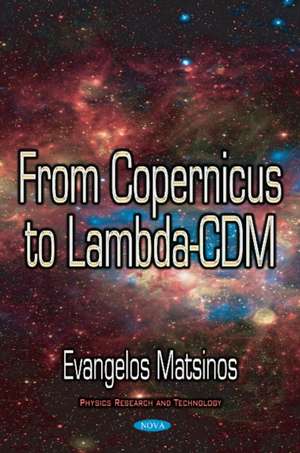From Copernicus to Lambda-CDM
Autor Evangelos Matsinosen Limba Engleză Hardback – 31 aug 2017
Preț: 1444.60 lei
Preț vechi: 1853.31 lei
-22% Nou
Puncte Express: 2167
Preț estimativ în valută:
276.41€ • 290.15$ • 229.44£
276.41€ • 290.15$ • 229.44£
Carte disponibilă
Livrare economică 20 martie-03 aprilie
Preluare comenzi: 021 569.72.76
Specificații
ISBN-13: 9781536120349
ISBN-10: 1536120340
Pagini: 370
Dimensiuni: 180 x 260 x 23 mm
Greutate: 0.77 kg
Editura: Nova Science Publishers Inc
Colecția Nova Science Publishers Inc
ISBN-10: 1536120340
Pagini: 370
Dimensiuni: 180 x 260 x 23 mm
Greutate: 0.77 kg
Editura: Nova Science Publishers Inc
Colecția Nova Science Publishers Inc
Cuprins
Introduction; Introduction to the Tensor Calculus; Rudiments of the Differential Geometry; Physics Before Einstein: Classical Mechanics & Electromagnetism; Physics Before Einstein: The 2-Body Planetary-Motion Problem; The Special Theory of Relativity; The General Theory of Relativity; The Schwarzschild Metric; The Kerr-Newman Metric; Cosmology; The First Three Minutes: Revisited; Epilogue; References; Index.
